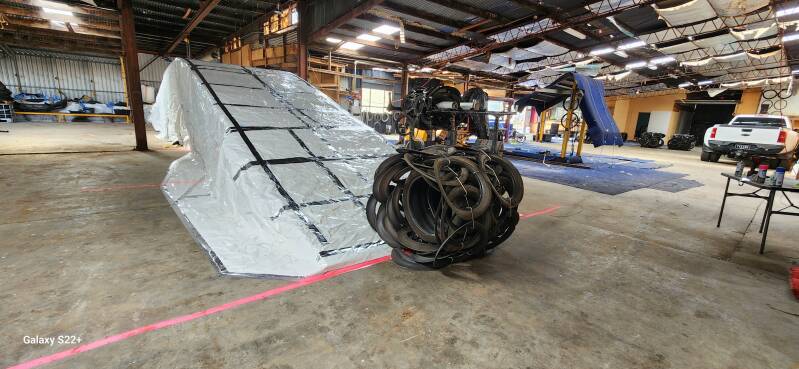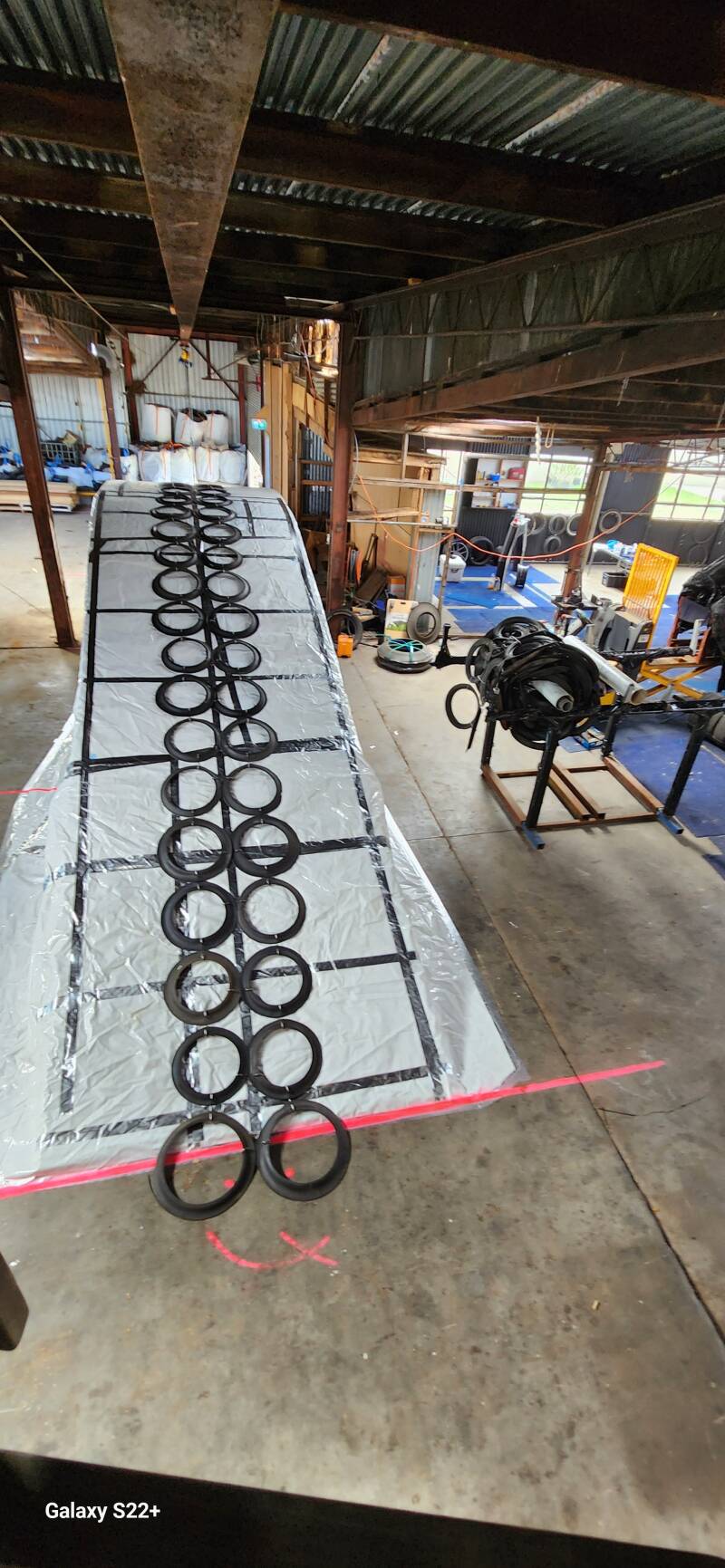BlackGold Rolls Save Labor 80% Min
Save 80% labour min by reducing trips back and foward with 2 Tyres or Indervidual Sidewalls simply unroll the full length in 1 pass will save u 8 trips min.
A well known fact, we do not
Lift Carry or Drag anything we can Roll
Eg...2 objects the same weight both too heavy to lift 1 is Square and u can not move it the other is Round and u simply Roll it.



50% of the time walking back Empty handed is Profits Lost
Silage pile top layer: Silage or compost?
Keith A. BryanMarch 13, 2025
Mismanagement of the silage pile can lead to significant damage to the top layer, which can lead to losses in quality, quantity, time and money.
We’ve all seen it. If you haven’t seen it, you’re probably not feeding ensiled crops to ruminants – high-producing lactating dairy cows or rapidly growing grow/finish feedlot cattle. What is “it,” you may ask? It's top-layer spoilage – that rind of discolored, decomposing feed often laden with yeasts, molds and mycotoxins on the top of your silage bunker or pile. Is it silage or compost?
Silage is simply forage or grain crops that have been harvested and stored in a manner to preserve nutrients by rapidly reducing the pH of the material via microbial fermentation. Optimal fermentation is an anaerobic process (occurring in the absence of oxygen) that goes through several phases to achieve a stable endpoint and preserve the maximum nutritional value of the feed. Compost, on the other hand, is a mixture of nitrogen- and carbon-rich ingredients with oxygen and water, to be used as plant fertilizer or to improve the physical, chemical and biological properties of soil. Aside from the obvious differences between the purposes for silage and compost, the primary difference is oxygen. Silage should be made in the absence of oxygen, whereas compost is made in the presence of oxygen.
Due to the difference in gas-filled porosity and oxygen in the top layer and the resulting nutrient degradation versus the core of a silage pile, the economic impact of top-layer spoilage in a silage pile can be significant. Spoilage typically results in losses of both quality and quantity, affecting the overall efficiency of feed utilization, which directly influences farm productivity and profitability. Here are some key points related to top-layer spoilage:
Loss of quality
- Nutrient degradation: The spoiled top layer of silage loses critical nutrients, such as carbohydrates, proteins and vitamins. This reduces the nutritional value of the silage, requiring the purchase of additional feed or supplements to meet animals’ dietary needs.
- Microbial contamination: Nutrient degradation and loss are functions of microbial contamination. When exposed to an oxygen-rich environment, yeasts, molds and other spoilage microorganisms thrive on the nutrients we are trying to preserve.
- Reduced feed intake: Animals may refuse consumption of spoiled silage, leading to reduced feed intake and potential problems due to inadequate nutrition.
- Decreased milk production or reduced growth rate/efficiency of gain: For dairy and meat-producing ruminants, substandard silage can result in lower productivity and increased feed costs, leading to financial losses.
- Suboptimal immunity: Mycotoxins consumed by ruminants can be detoxified in the rumen; however, high levels of mycotoxins can compromise the immune system, leading to various health issues. These may include an increase in somatic cell count, reproductive problems and other health complications indirectly caused by immune suppression.
Loss of quantity
- Dry matter loss: Spoilage results in a loss of dry matter from silage. Spoiled silage becomes unpalatable, often contaminated with yeasts, molds and mycotoxins, leading to increased discard of significant quantities of rotten silage or compost.
- Increased waste: Spoilage of the top layer of silage leads to greater waste, increasing the amount of silage that needs to be produced and stored, thus increasing production costs. In addition, removing spoiled silage from a pile takes time.
The economic cost of spoilage
The cost of spoilage depends on factors such as silage quality, pile size and storage duration. For example, in a large silage pile or bunker, the economic loss can range from 10% to 20% of the total stored feed, depending on the severity of spoilage.
Using some simple math: In a bunker silo that is 40 feet wide and averages 12 feet high, one foot of visible spoilage is a little more than 8% of the stored feed. If the visible spoilage layer is 18 inches thick, that amounts to about 12.5% of stored feed. One foot of visible spoilage across the top layer of a 20-foot-tall drive-over pile may approach 15% to 20% of stored feed.

